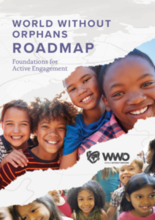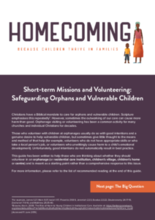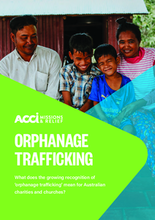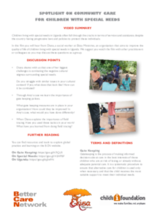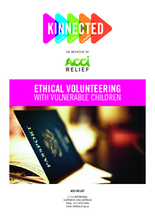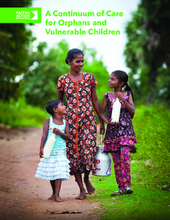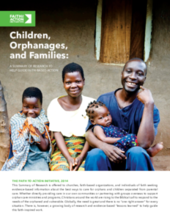Understanding the evidence and impetus for change and global care reforms
Before considering the nuances of transition from residential care to family-based care, it is important to first understand the reasons why there is a global shift away from the use of residential care for children and what is driving these changes.
The aim of this step is therefore to develop a high-level understanding of the reasons why care and child protection systems are being reformed across the world and why residential care for children is being scaled back and replaced with family-based care.
This step is focused on learning. Key actions may include facilitating or participating in learning through:
- Workshops
- Forums
- Webinars
- Advocacy events
- Conferences
- Trainings
- Online discussions
- Self-led learning
- Access to relevant learning resources
Learning topics that may be important to explore during this step include:
- The risks and impacts of institutionalisation on children’s development and wellbeing
- The importance of the family environment for children’s optimal development
- The reason for the prioritization of family-based care
- The international child rights framework: International norms and commitments underpinning global care reforms
- What are care reforms: Strengthening and transforming child protection and care reform systems to better protect the rights and best interests of children
- The continuum of care
- Decision making in the best interests of the child, including the necessity and suitability principles.
- Understanding how residential care service transitions fit into the continuum of care and broader child protection and care reform efforts
- Perspectives of care experienced young people and children
- The role of donors, partners and volunteers in supporting the rights and best interests of vulnerable children
- Faith Perspectives: Looking at children’s care and protection through a faith-based lens (for faith actors)
The key milestones associated with this step are, organizations key decision makers demonstrate:
- A level of understanding of what is driving the changes to children’s care and the shift away from residential care towards family-based care.
- An in-principal agreement with the prioritization of family-based care for children
- Readiness to explore the implications of transition to family-based care for the individual organisation in the specific local context
Resources
Displaying 21 - 30 of 31
According to UNICEF, nearly 90% of the world’s orphans have at least one living parent who cannot afford to safely care for them. The solution is family-based care.
World Without Orphans Roadmap: Foundations for Active Engagement is a result of broadscale collaboration
among global, regional, and national leaders across many faith communities. It is informed by experts
from global organizations that lead the way in identifying best practices for caring for vulnerable families
and children.
This guide was developed by Homecoming and has been written to help those in the Christian community who are thinking about whether they should volunteer in an orphanage (or residential care institution, children’s village, children’s home or centre).
This briefing note has been written to give Australian charities and churches currently engaging with overseas residential care institutions an overview of the issue of orphanage trafficking and an understanding of how to ensure any overseas funding and volunteering supports the best interests of children in line with national and international legal frameworks.
In this video, social worker Diana Nyakarungi describes how Ekisa Ministries in Jinja, Uganda supports parents to care for their children with special needs within the community.
This tool was designed to help those seeking to assist Christian faith-based actors involved in long-term residential care programs make the transition from institutional to non-institutional (family and community-based) child welfare programs. It was written to give some insight into what this journey called ‘deinstitutionalisation’ might look like and what steps and processes might be involved. Whilst it contains a brief overview of the technical stages, its main purpose is to guide you through the process of achieving buy-in and is not intended to be a technical deinstitutionalisation manual.
Without careful consideration and awareness of the broader issues, good intentions could contribute to the exploitation and vulnerability of the children we seek to help.
This animated video from Lumos, narrated by Lumos founder J.K. Rowling, illustrates the “tragic consequences of orphanage care,” and argues that more can and should be done to support families to care for their children, eliminating the use of institutional care.
A Continuum of Care provides an overview of a range of alternative care options for children who have been separated from parental care.
This Summary of Research provides a concise overview of a range of studies and findings that can inform approaches to caring for children who, through orphanhood, abandonment, or other causes, have been separated from parental care.

